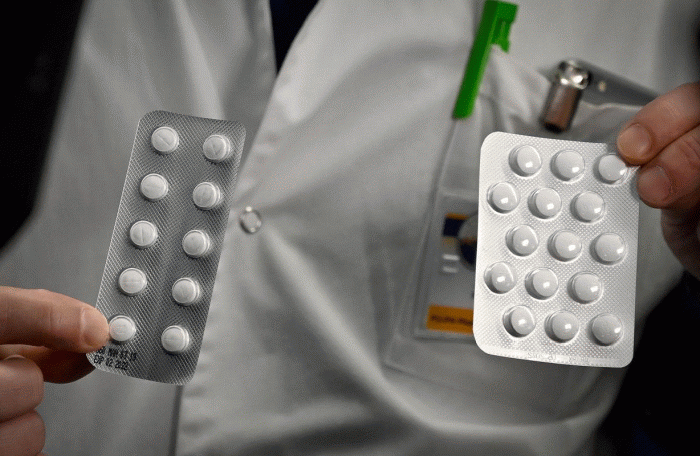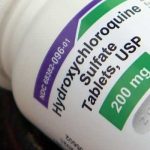Hydroxychloroquine does NOT help in preventing coronavirus infections but causes NO harm. New randomized study from England Journal of Medicine shows the malaria drug FAILED to prevent COVID-19 and is no better than placebo pills

We’ve been writing about hydroxychloroquine for at least 3 months now. During the time, we shared with you anecdotal evidence from doctors and patients who claimed the malaria drug saved their lives. To be fair and balanced, we also shared several other studies from CDC, NIH and scientists around the world, that linked the drug to increased rate of mortality. The World Health Organization (WHO) also warned about the potential side effects of hydroxychloroquine. Last month, WHO finally pulled the plug on hydroxychloroquine trials for Covid-19.
Now in a final blow for the theory that hydroxychloroquine has some antiviral effects that could combat the coronavirus, a new rigorous study published Wednesday by the New England Journal of Medicine, found that taking hydroxychloroquine does not help prevent coronavirus infections for people recently exposed to the virus.
The study, which was led by Dr. David Boulware, shows that hydroxychloroquine was no better than placebo pills at preventing illness from the coronavirus. This is first rigorous randomized, double-blind, placebo-controlled trial to test the malaria pills as a preventive treatment. More than 800 volunteers were randomly assigned to take hydroxychloroquine or a placebo. After 14 days in the study, 12 percent of patients on hydroxychloroquine developed COVID-19 symptoms versus 14% in the placebo group, but the difference is so small it could have occurred by chance, Boulware said.
However, there is silver lining. Contrary to results of other studies, they found that hydroxychloroquine did not seem to cause serious harm. Only about 40% on it had side effects, mostly mild stomach problems. The findings come after President Donald Trump repeated touted the drug as a potential game-changer. Just late last month, President Trump even decided to take the drug as a prophylactic. However, the randomized trial study did not demonstrate a significant benefit of hydroxychloroquine as postexposure prophylaxis for Covid-19.
“We were disappointed. We would have liked for this to work,” said the study leader, Dr. David Boulware, an infectious disease specialist at the University of Minnesota. “But our objective was to answer the question and to conduct a high-quality study,” because the evidence on the drug so far has been inconclusive, he said.
The randomized trial was conducted at research pharmacies in Minneapolis and Montreal. The assignments were concealed from investigators and participants; only pharmacies had access to the randomization sequence.
“After high-risk or moderate-risk exposure to Covid-19, hydroxychloroquine did not prevent illness compatible with Covid-19 or confirmed infection when used as postexposure prophylaxis within 4 days after exposure,” the team concluded.
Below is the abstract of the study.
BACKGROUND
Coronavirus disease 2019 (Covid-19) occurs after exposure to severe acute respiratory syndrome coronavirus 2 (SARS-CoV-2). For persons who are exposed, the standard of care is observation and quarantine. Whether hydroxychloroquine can prevent symptomatic infection after SARS-CoV-2 exposure is unknown.METHODS
We conducted a randomized, double-blind, placebo-controlled trial across the United States and parts of Canada testing hydroxychloroquine as postexposure prophylaxis. We enrolled adults who had household or occupational exposure to someone with confirmed Covid-19 at a distance of less than 6 ft for more than 10 minutes while wearing neither a face mask nor an eye shield (high-risk exposure) or while wearing a face mask but no eye shield (moderate-risk exposure). Within 4 days after exposure, we randomly assigned participants to receive either placebo or hydroxychloroquine (800 mg once, followed by 600 mg in 6 to 8 hours, then 600 mg daily for 4 additional days). The primary outcome was the incidence of either laboratory-confirmed Covid-19 or illness compatible with Covid-19 within 14 days.RESULTS
We enrolled 821 asymptomatic participants. Overall, 87.6% of the participants (719 of 821) reported a high-risk exposure to a confirmed Covid-19 contact. The incidence of new illness compatible with Covid-19 did not differ significantly between participants receiving hydroxychloroquine (49 of 414 [11.8%]) and those receiving placebo (58 of 407 [14.3%]); the absolute difference was −2.4 percentage points (95% confidence interval, −7.0 to 2.2; P=0.35). Side effects were more common with hydroxychloroquine than with placebo (40.1% vs. 16.8%), but no serious adverse reactions were reported.CONCLUSIONS
After high-risk or moderate-risk exposure to Covid-19, hydroxychloroquine did not prevent illness compatible with Covid-19 or confirmed infection when used as postexposure prophylaxis within 4 days after exposure. (Funded by David Baszucki and Jan Ellison Baszucki and others; ClinicalTrials.gov number, NCT04308668. opens in new tab.)PRIMARY OUTCOME
Overall, new Covid-19 (either PCR-confirmed or symptomatically compatible) developed in 107 of 821 participants (13.0%) during the 14 days of follow-up (Table 2). The incidence of new illness compatible with Covid-19 did not differ significantly between those receiving hydroxychloroquine (49 of 414 [11.8%]) and those receiving placebo (58 of 407 [14.3%]) (P=0.35). The absolute difference was −2.4 percentage points (95% confidence interval, −7.0 to 2.2). Figure 2shows the development of Covid-19 over time. Two hospitalizations were reported (one in each group). No arrhythmias or deaths occurred. There was no meaningful difference in effectiveness according to the time of starting postexposure prophylaxis or in any of the prespecified subgroups (Fig. S1 in the Supplementary Appendix). Overall, 10.7% of the participants (46 in the hydroxychloroquine group and 42 in the placebo group) did not complete the day 14 survey; among these participants, vital status was unknown for 36 in the hydroxychloroquine group and 33 in the control group. In sensitivity analyses, exclusion of these persons from the denominator or inclusion of them as having had an event did not affect the trial conclusions (Table S1).




